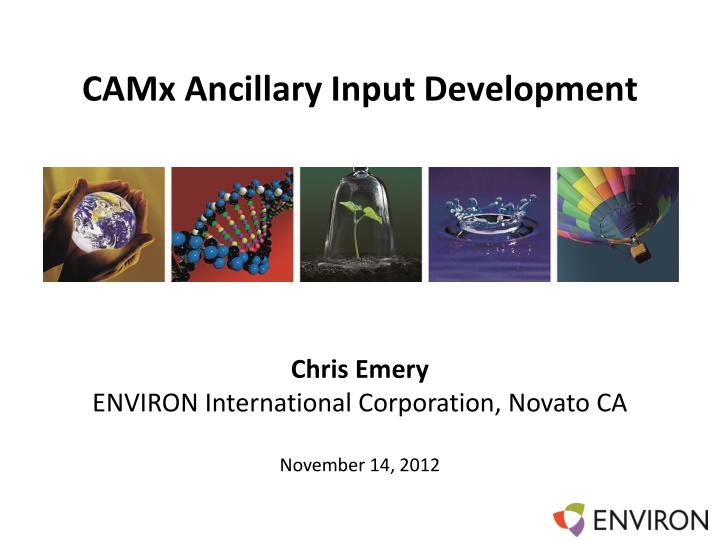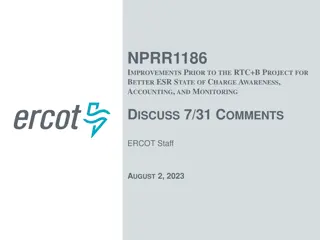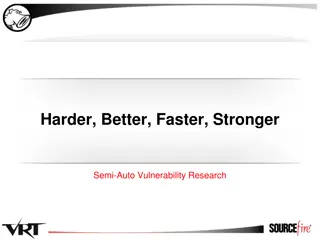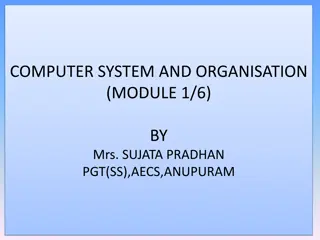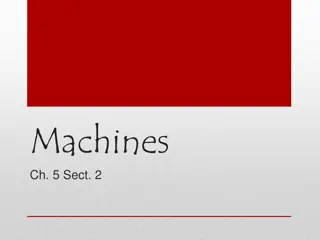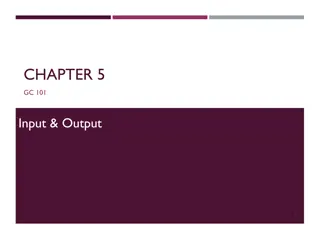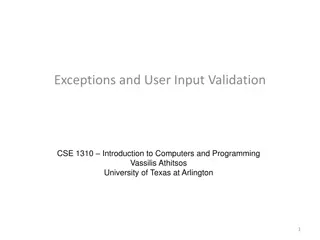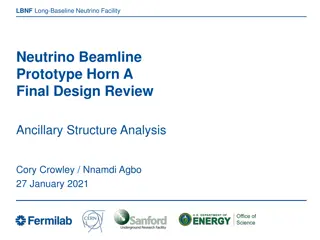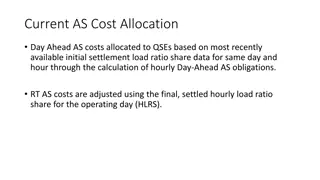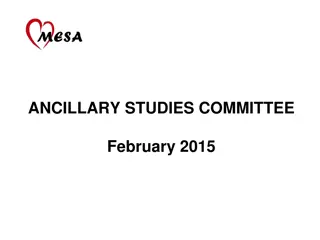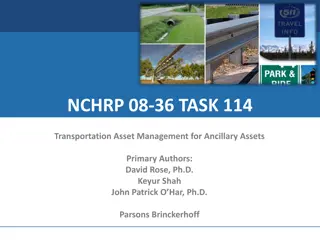CAMx Ancillary Input Development
This project involves developing ancillary inputs for CAMx, converting raw WRF output to CAMx formats, and processing meteorological data. It includes tasks such as time-shifting, diagnosing sub-grid clouds, and enhancing turbulent exchange coefficients. Additionally, it focuses on the development of land use/land cover data and photolysis rates for atmospheric calculations.
Download Presentation

Please find below an Image/Link to download the presentation.
The content on the website is provided AS IS for your information and personal use only. It may not be sold, licensed, or shared on other websites without obtaining consent from the author.If you encounter any issues during the download, it is possible that the publisher has removed the file from their server.
You are allowed to download the files provided on this website for personal or commercial use, subject to the condition that they are used lawfully. All files are the property of their respective owners.
The content on the website is provided AS IS for your information and personal use only. It may not be sold, licensed, or shared on other websites without obtaining consent from the author.
E N D
Presentation Transcript
CAMx Ancillary Input Development Chris Emery ENVIRON International Corporation, Novato CA November 14, 2012 Template Template
Meteorological Processing WRFCAMx v3.3 converts raw WRF output to CAMx formats Time-shift from UTC to CST Extract 27 vertical layers up to 11 km MSL Use every WRF layer up to 3 km, collapse layers above Diagnose sub-grid clouds in 36 & 12 km grids (not 4 km) Calculate vertical turbulent exchange coefficients (or diffusivities , Kv) KVPATCH used to enhance Kv in specific cases Enhance minimum nighttime Kv in urban surface layer Extend diffusion through clouds that cap the daytime boundary layer 2
Development of Landuse/Landcover Defines surface types for dry deposition calculations Prepared for the 36/12/4km grids Gridded time-invariant fields for Landuse 26 categories for Zhang dry deposition scheme Leaf area index (LAI) 2000 North America Land Cover (NALC) database Satellite derived data at 1 km resolution http://edc2.usgs.gov/glcc/nadoc2_0.php 29 categories cross referenced to 26 CAMx categories 3
Development of Landuse/Landcover LAI MEGAN biogenic model Global 30 second (~1 km) resolution 2001 monthly averages http://acd.ucar.edu/~guenther/MEGAN/MEGAN.htm 4
Column Albedo/Haze/Ozone This file defines state of atmosphere for photolysis rate calculations AHOMAP generates gridded CAMx input file containing Surface albedo (from landuse file) Total atmospheric column haze opacity (default, constant) Total atmospheric ozone column Total Ozone Mapping Spectrometer (TOMS) Aboard OMI satellite platform in 2010 Daily, 1 degree resolution http://ozoneaq.gsfc.nasa.gov/OMIOzone.md 6
Photolysis Rates TUV Version 4.8 (NCAR) Reads AHO file Creates lookup table of clear-sky photolysis rates Dimensions include: solar zenith angle, height above ground, surface albedo, haze column, ozone colum Photolysis reactions defined by the Carbon Bond version 6 (CB6) chemical mechanism These rates are internally adjusted within CAMx for hourly gridded cloud conditions 8
Initial/Boundary Conditions IC s represent initial concentration pattern from which the simulation starts BC s represent concentration patterns outside of the outer CAMx modeling domain that are transported into the grid system Derived from MOZART-4 (NCAR) output for 2010 http://www.acd.ucar.edu/wrf-chem/mozart.shtml 1.9 by 2.5 degree horizontal resolution, 56 vertical layers 6-hour output intervals Horizontally and vertically interpolated to CAMx 36 km grid Mapped to CB6 chemical speciation Data were time shifted from UTC to CST 9
CAMx Configuration Chemistry CB6 ozone only (no PM) In-line TUV cloud photolysis adjustment Wet removal (from WRF cloud+rain output) Zhang dry surface deposition Standard advection/diffusion Sensitivity tests for Kv inputs, ACM2 treatment Plume-in-Grid (PiG) for large NOx sources Sensitivity tests for PiG 10
